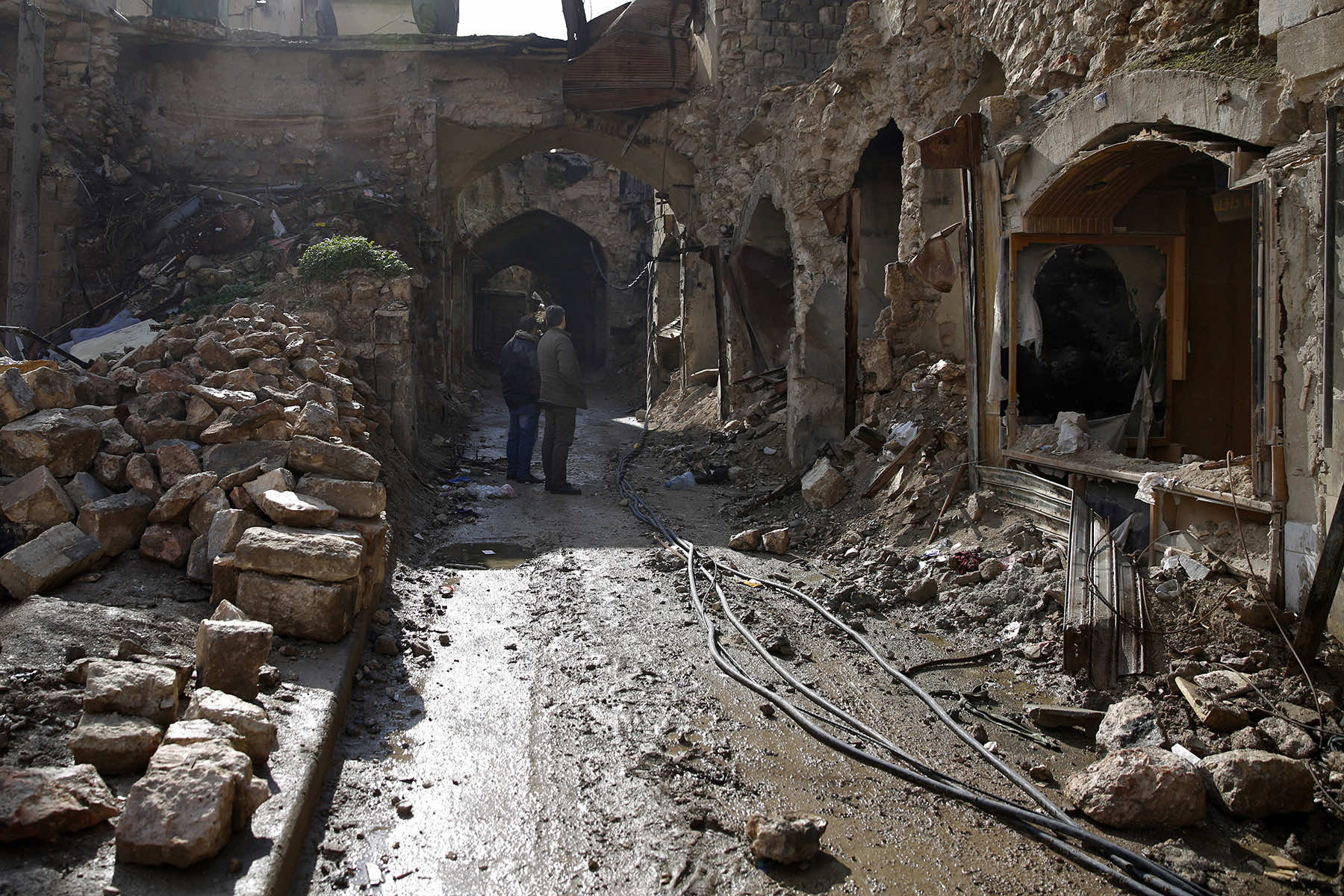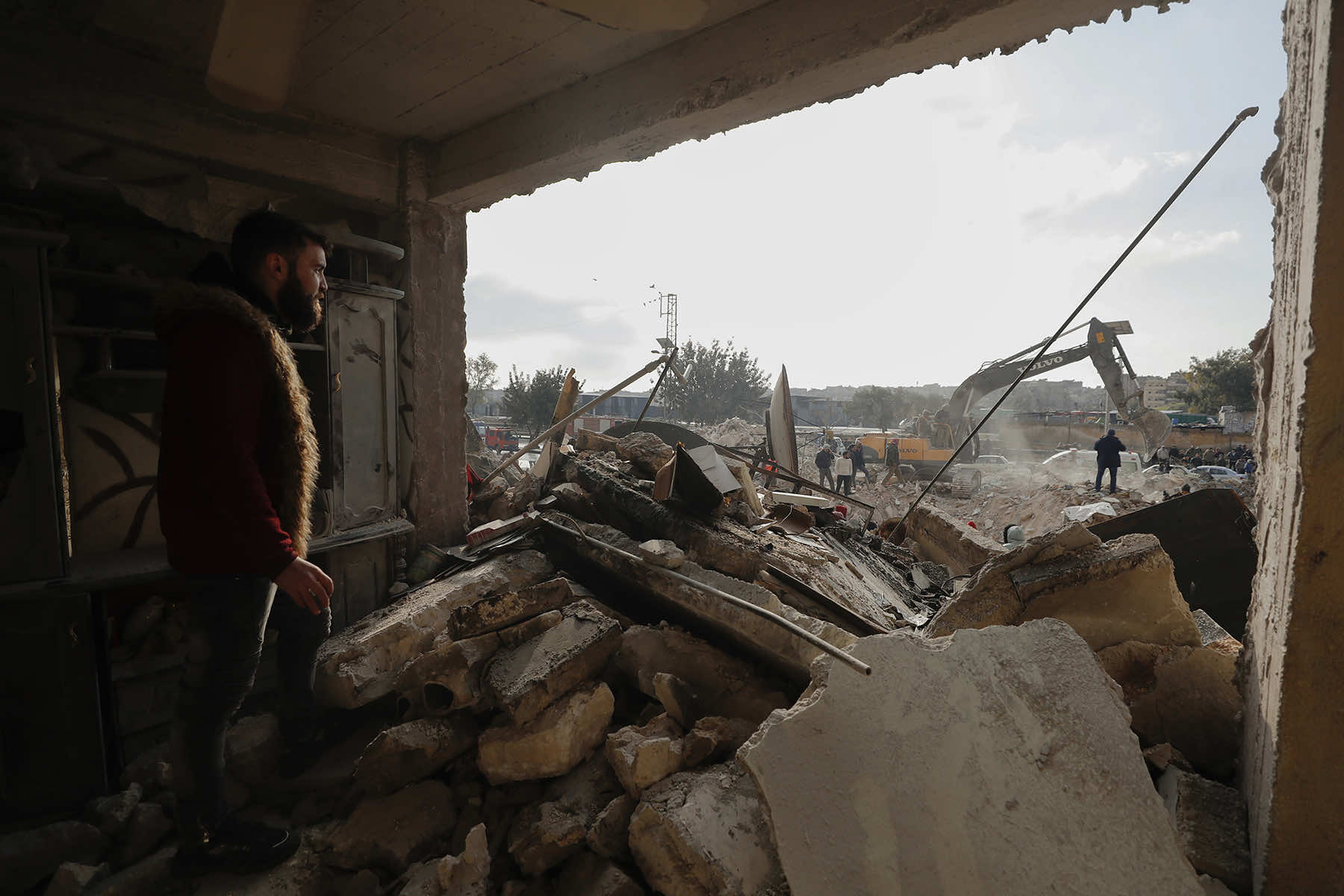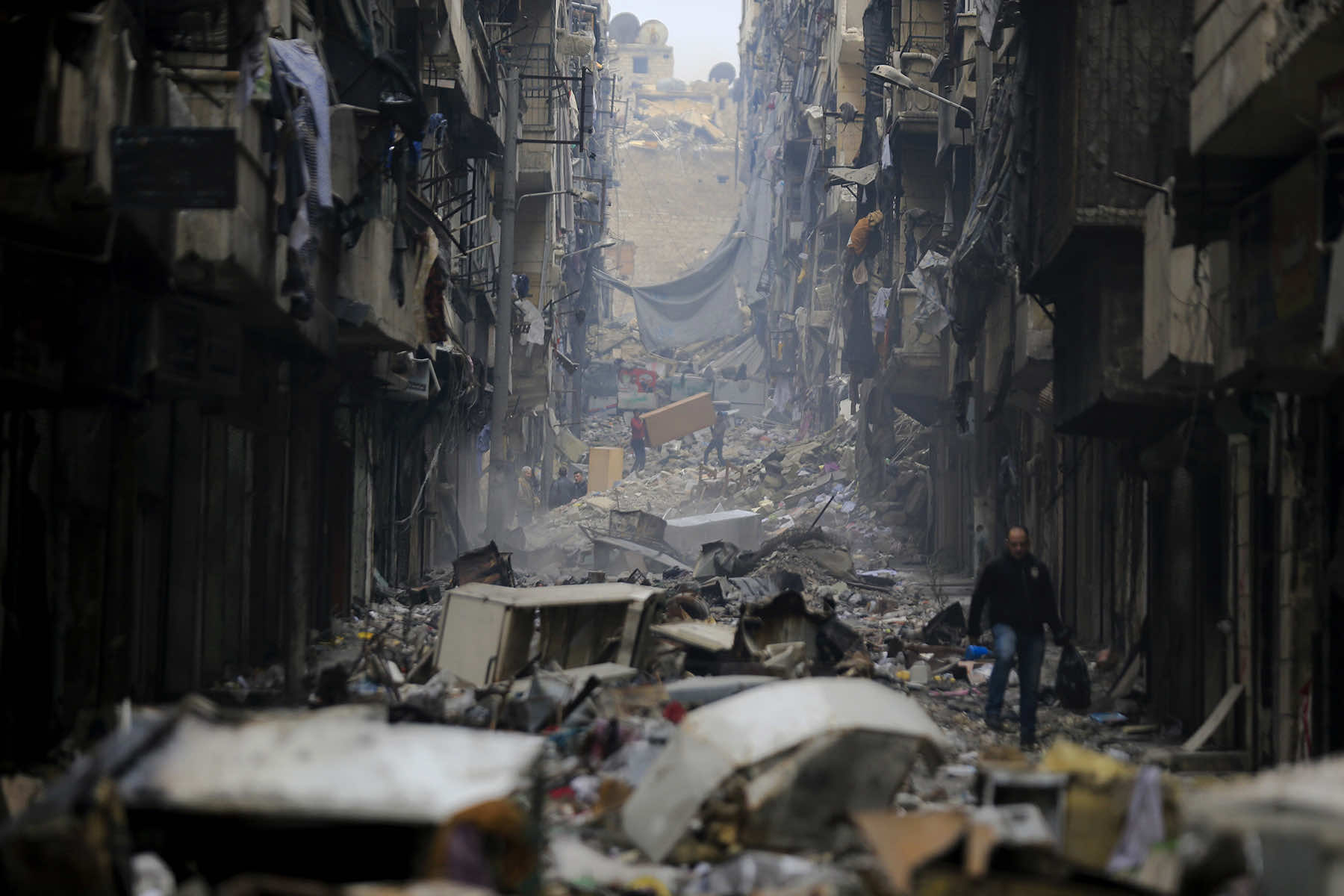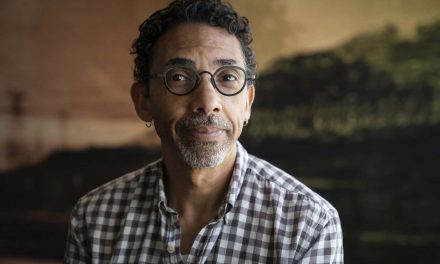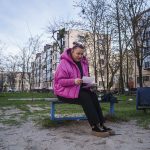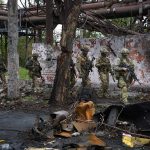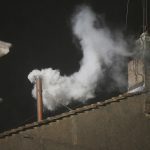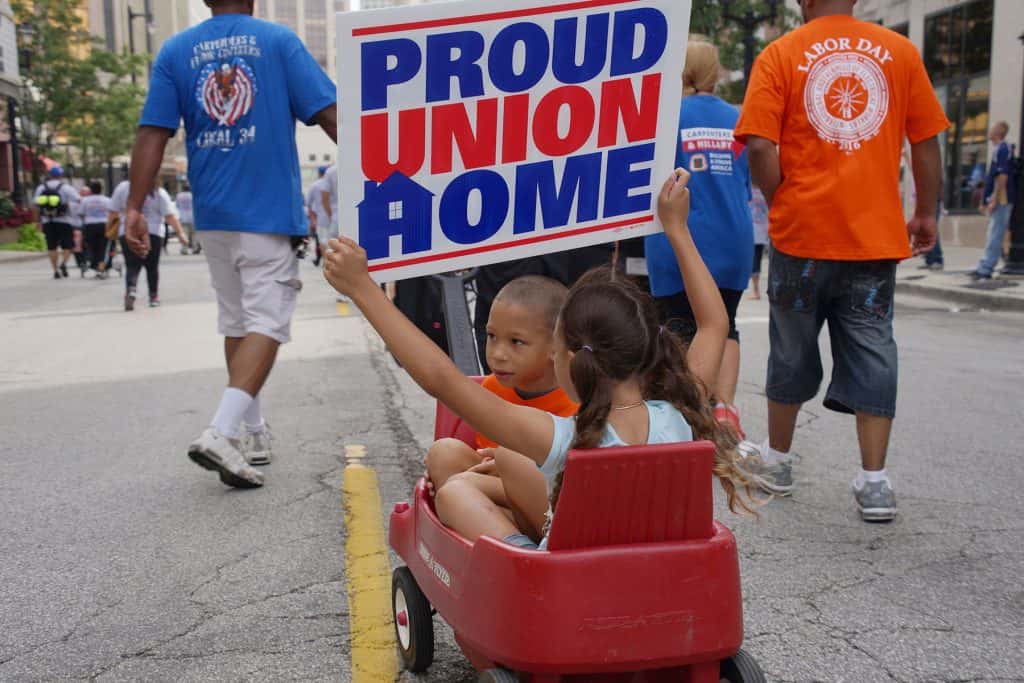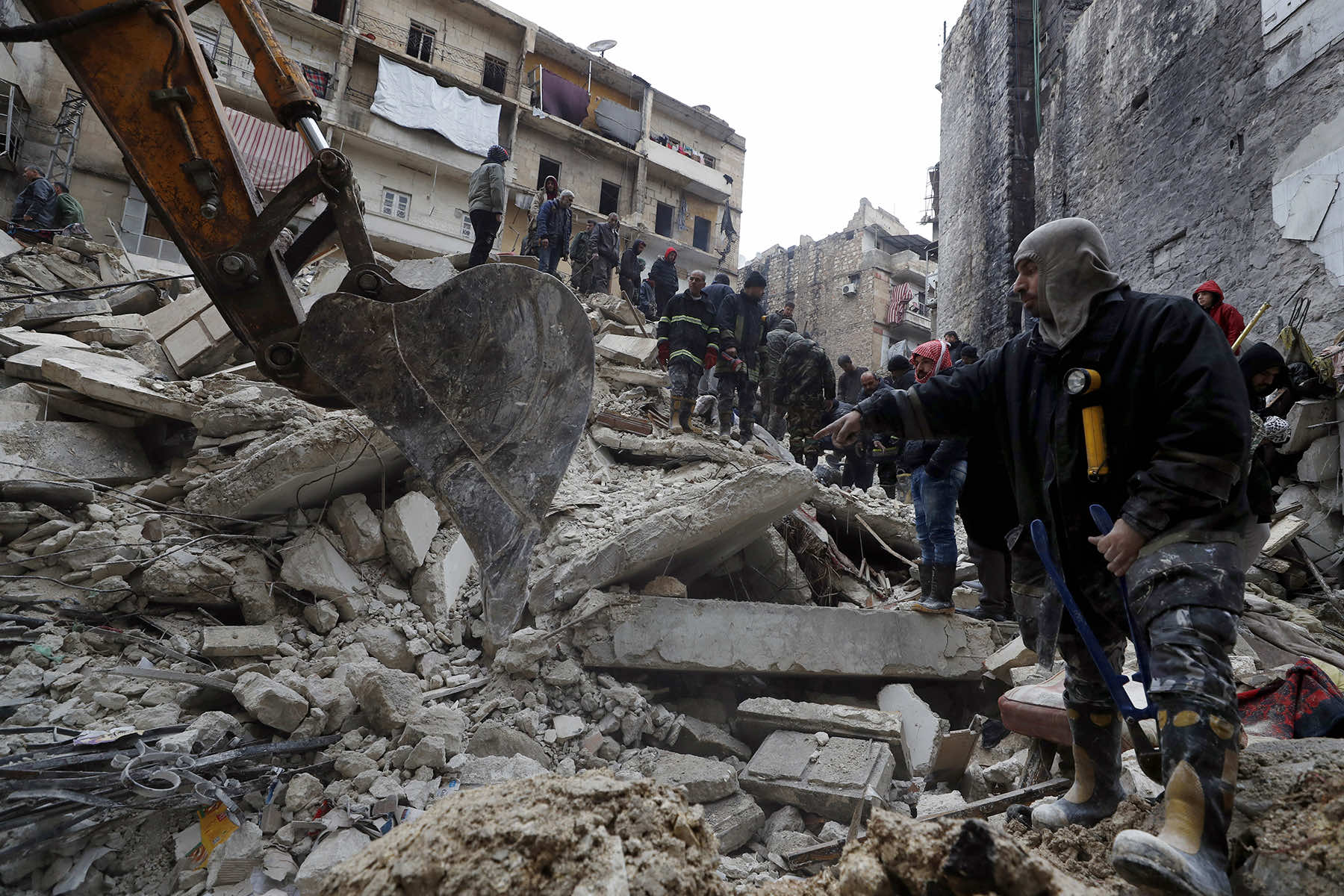
By Kimberly Howe, University of Virginia Humanitarian Collaborative Practitioner Fellow; Assistant Research Professor of International Relations, Tufts University
Three weeks after the February 2023 earthquakes struck Turkey and Syria, I stood amid the rubble in Jindires, a devastated Syrian village. An estimated 50,000 people had lost their lives in the two countries by that point, with the number of casualties still climbing.
Around me, heaps of concrete and twisted metal mixed with bursts of color — fragments of furniture, children’s toys, clothing — that served as reminders of the lives that crumbled when homes crumbled, trapping people inside and underneath the wreckage. Many bodies remained buried beneath those concrete heaps.
In the absence of the heavy equipment needed to remove large chunks of debris, I saw people using brooms and wheelbarrows to make a clean patch of earth where they could pitch their tents, often in front of their collapsed homes.
There was almost a sense of normalcy, at least on the surface. Some shops were open for business. Men passed by on motorcycles and bicycles, women bought fruits and vegetables.
For someone like me who researches war and humanitarian crises, there was also a glaring omission: I saw no international aid workers and no white SUVs with the logos of globally recognized institutions during the 48 hours I spent in the Afrin district of northern Syria. As far as I could tell, there were no other foreigners there during my visit.
One group making a difference
Based on what I saw firsthand and have learned through my research, the international humanitarian response to the earthquake in war-torn northwest Syria has been deplorable.
With politics trumping humanitarian needs, everyone from heads of state and news outlets to human rights groups and Syrian rescue groups has lambasted the United Nations for doing too little. U.N. aid chief Martin Griffiths has even apologized for his organization’s failures.
But some humanitarian aid is being delivered, I observed, thanks to Syrian groups like the Bahar Organization, a grassroots Syrian organization I’ve been studying for 10 years.
Aid delivery everywhere
I first met Dr. Sharvan Ibesh, a co-founder of Bahar, in 2013, when I was researching how Syrian civil society was responding to the humanitarian needs of civilians. At the time, the war had been going on for two years.
The staff members of many international aid groups and other foreign organizations had by then pulled out of opposition-controlled Syrian regions, citing problems with security as a result of ISIS and armed groups that were backed by the al-Qaida terrorist network.
International organizations were desperate to find partners to do the work they could no longer do because of safety concerns. But the brutal regime led first by Hafez Assad and later by his son Bashar Assad, who took over in 2000, meant that civil society was both weak and fledgling, and there were few organizations with the skills to deliver humanitarian relief.
Ibesh had been a surgical resident in the Syrian city of Aleppo when the bombs started falling there in February 2012, less than a year after the uprising began. He and his fellow residents set up emergency medical care stations throughout the city to treat those civilians badly injured by Syrian and Russian barrel bombs. Back then, Bahar was operating with a makeshift mobile office and on a shoestring budget, and many members of its staff were volunteers.
Ibesh spoke little English and couldn’t communicate directly with North American and European donors or international and nongovernmental organizations. What Bahar excelled at was getting aid to people affected by the war throughout northwest Syria, no matter which armed group they were living under.
Bahar volunteers or staff could cross checkpoints – moving from territory controlled by one warring party to another – and they could deliver aid without being robbed or extorted, a feat unimaginable to any international organization.
Still a war zone
As the war has dragged on, Bahar has deepened its capacities and expanded its humanitarian programs with an annual budget that has averaged US$50 million for the past three years. It still partners with international organizations, but I’ve learned through my research that it’s also one of the few Syrian organizations to receive direct funding from the U.S. Agency for International Development.
Northwest Syria remains a war zone. Syria’s Afrin district is under Turkey’s influence, having pushed out Kurdish forces and paved the way for armed militias from all over the country to find a new home there. During my visit, Syrian and Russian warplanes bombed nearby areas of Idlib province that were also harmed by the earthquake.
When the earthquake hit the Afrin district, Bahar was already there and already engaged with people affected by the Syrian civil war. Many Bahar staff members lost their homes, family members died, and one staff member was killed, but they mobilized immediately. Thanks to its direct relationship with USAID, the group could reallocate funds almost instantaneously.
Bahar, according to several conversations I had during my visit and beforehand, was the only organization operating in Afrin in the earthquake’s aftermath. A second Syrian nonprofit organization, Takaful Al-Sham, has since joined them.
By the time I arrived, Bahar had set up a multiservice clinic in Jindires, with support from Doctors Without Borders, and distributed and helped set up 590 tents for families who had lost their homes. It was providing activities for children and psychological support for traumatized people, along with cash for many residents.
And its pre-earthquake work continues in the broader Afrin district – the group is running a hospital, a tuberculosis clinic and a malnutrition center for infants and children, among other endeavors.
Bahar continues to navigate this impossible web of politics, danger, and extreme humanitarian need with a staff the group says now numbers 800.
I believe that they can do it because they are local – they’re embedded in the community, with a deep understanding of what their neighbors need. Bahar is directly funded by USAID, which means it can avoid going through an intermediary. It could also immediately redirect spending as needed following the earthquake.
On the ground
In 2016, under what was dubbed the Grand Bargain agreement, 61 donor countries and aid providers pledged to provide 25% of their humanitarian budgets directly to local groups, instead of large international organizations such as the United Nations and international nongovernmental organizations.
The most recent independent audit measuring progress toward these goals shows that this direct support for local organizations is “slow” and “stymied.”
If the international community is unclear about why and how supporting local organizations can save lives, the earthquake in Syria is a case in point.
I’m not suggesting that Bahar can single-handedly manage the earthquake response in Syria. But I do believe that Bahar, and organizations like it, are best positioned to respond because they are already there.
They know the communities. And, due to the funding they receive directly from donors, they are nimble. They are also not mired in the geopolitical dimensions of humanitarian aid that keeps U.N. assistance and personnel in Damascus, Syria’s capital, and on the Turkish side of the border.
Standing on the roof of a Bahar office in Jindires, Ibesh and I could see two collapsed apartment buildings across the street. Each was formerly four stories tall – about 100 residents were killed when the buildings crumbled to the ground in the earthquake.
Ibesh said he longs for additional support from foreign countries and aid groups to Jindires and the surrounding areas affected by the earthquake.
On top of the funds and materials they would bring, the presence of foreign aid workers might signal international solidarity and provide some hope for the Syrians who have been living through a dozen years of war and now this natural disaster.
Hassan Ammar (AP) and Omar Sanadiki (AP)
Originally published on The Conversation as Syrian earthquake devastated an area that was already a disaster zone – and highlights the vital role of local aid groups
Support evidence-based journalism with a tax-deductible donation today, make a contribution to The Conversation.

